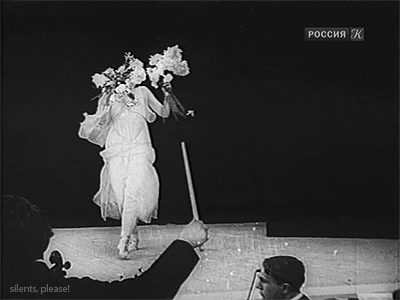Apr 21
20160
350.org / 1Sky, Avaaz, Bill & Melinda Gates Foundation, Foundations, Non-Profit Industrial Complex, Pacifism as Pathology, Purpose [Public Relations Arm of Avaaz], Rockefeller Brothers Fund, The Soros Network | OSI, United Nations
Advertising Bill McKibben Breakthrough Energy Coalition Naomi Klein New Economy Plague Religion Rockefeller Brothers Warren Buffett
A World of Make Believe
April 16, 2016
by Jay Taber
There are a number of threats to the future of humankind. The big bugaboo climate change doesn’t even make my top five. If I had to rank them, I’d say these would be it:
- Advertising
- Corruption
- Privatization
- Plague
- Religion
Climate changed can’t be stopped. All we can do is adapt to new and changing circumstances.
Corruption in government institutions and economic markets that determine climate change initiatives, however, pretty much guarantees that public policies and plans will produce profitable but not effective adaptation. An example of this is the Breakthrough Energy Coalition plan to reduce fossil fuel burning by building more nuclear power plants, a plan supported by the United Nations and promoted by Bill Gates.
Another global initiative promoted by Gates and supported by the UN is the Millenium Development Goals (MDGs), now rebranded as the Sustainable Development Goals (SDGs), that plan to use the power of UN agencies like the World Bank and International Monetary Fund to convert the world’s remaining forests to plantations for growing such food products as GMO soybeans and palm oil. A key part of the SDGs, which is well underway, is building mega-dams in the Amazon River Basin and elsewhere to generate electrical power for the industrial development that is currently displacing Indigenous peoples and annihilating biodiversity.
Privatization of all things public – land, water, nature, government – is the ultimate sustainable development goal. These fall under the much-hyped ‘New Economy’ that Gates and the UN rolled out at COP 21 in Paris. Major promoters of the New Economy include Naomi Klein and Bill McKibben, public relations puppets funded by fossil fuel magnates Warren Buffett and the Rockefeller Brothers to lead divestment campaigns that are working to privatize all aspects of ownership of the fossil fuel industry, including control of fossil fuel reserves on public lands.
Plague that results from the deforestation of Africa, Asia, and South America have already become a concern to the World Health Organization, and epidemics are forecast to increase exponentially as poverty resulting from ethnic cleansing of Indigenous peoples and the privatization of public wealth skyrockets, creating mega-slums in which public health programs are replaced by black market pharmaceuticals that are routinely misused, creating a globalized human petri dish for untreatable diseases, such as the ‘Nightmare Bacteria’ that forced the Center for Disease Control to quarantine an entire floor of a public hospital in Maryland—after three patients and a nurse succumbed.
Religion under these horrifying circumstances — that are worsening by the day — poses another serious problem. Religious hysteria, end-of-the-world stuff, generates all kinds of unreasonable behaviors. Religious panic — particularly in fundamentalist, evangelical, and Pentecostal faiths — produces widespread aggression toward scapegoats. Religious terrorism, i.e. Christian Identity, ISIS, and Zionism, leads to murder, massacres, and genocide.
Advertising – in the form of privatized mass communication and education – now dominates public opinion, to the point that controlling consciousness on a global scale is a prescribed art that integrates government propaganda with the news and social media, creating what has been described as a “discursive monoculture”. No matter what vital issue, crisis, or concern arises, public discussion is now choreographed by public relations firms, i.e. Purpose, that work in tandem with NGOs, e.g. Avaaz, and coordinate with government agencies.
Private equity media — that now controls all broadcast, print, and digital news in the United States – has created a fixed mentality behind the ‘clean energy’ chimera, in which all public control of climate responses using public monies will be determined by elite private interests, i.e. Wall Street. Architects of the final solution, e.g. MDGs/SDGs, by pimping poverty and all other social ills that befall humankind, promote the false hope of privatization and the termination of collective ownership in exchange for totalitarian corporate control of the planet.
Global civil society – thanks to Wall Street controlled institutions, markets, and NGOs – is now “paralyzed in a collective hypnosis” that rejects universal social interests and “systematically favours corporate interests”. The art of social engineering in which Avaaz works with elites such as Rockefeller, Gates and Soros in shaping global society, by building upon strategic psychological marketing, relies on the non-profit industrial complex, i.e. 350.org, as the “foundation of imperial domination”.
The mystique of mass hypnosis that made Naomi Klein and Bill McKibben celebrities of the climate change movement could never have happened without the backing of Wall Street. With the advent of social media and the reign of the Internet, controlling consciousness is now child’s play. New world order—same old crimes.
[Jay Thomas Taber is an associate scholar of the Center for World Indigenous Studies, a correspondent to Forum for Global Exchange, and a contributing editor of Fourth World Journal. Since 1994, he has served as communications director at Public Good Project, a volunteer network of researchers, analysts and journalists engaged in defending democracy. As a consultant, he has assisted indigenous peoples in the European Court of Human Rights and at the United Nations.]

















